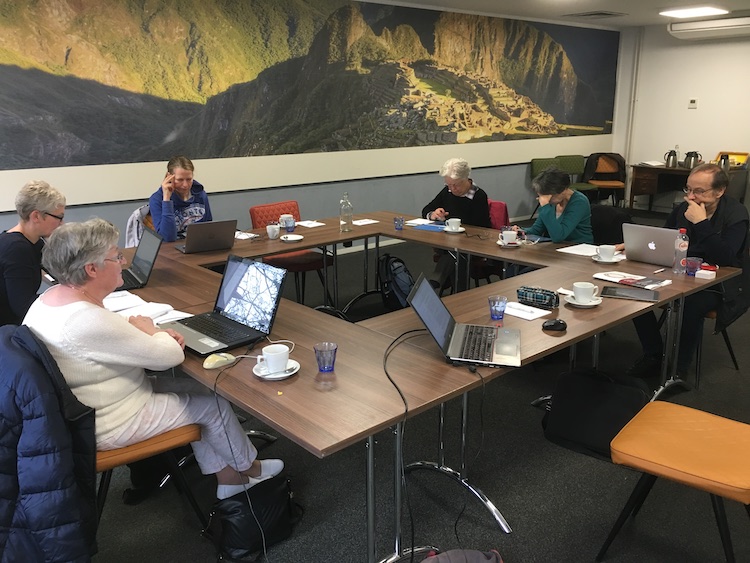My experience with the SENSE teachers’ meeting on Zoom
Written by Ann Bless
The SENSE Ed Special Interest Group for educators has been meeting up online every Friday since the end of March. These weekly meetings will soon be coming to an end, so if you'd like to join the final session on 29 May, don't forget to log onto the website and register via the Events page. To help you decide whether you’d like to join in, here’s what SENSE member Ann Bless has to say about the meetings.
I joined this Zoom group with fear and trepidation, since I had very little experience with online teaching and had the feeling that everyone was far more experienced than I was.
How wrong I was! Indeed there were people with more experience but I soon felt that I could ask any question without feeling stupid. In all the 30 years that I have been running courses on scientific writing, I had never dreamed that I would one day have to teach online, so hearing other teachers’ failures and successes was very helpful.
Every Friday from 14.00–15.00, about 10 of us meet up under the patient leadership of Sally Hill, who has to cope with a group of rather chatty teachers sharing their views on online teaching. Most of us use Zoom. We not only share information on technological subjects, such as break outs, how to show a PowerPoint and when to use Canvas, but also talk about how we feel about teaching to faces only. How far do we have to adapt our courses? Do we enjoy teaching online? Do we long to go back to normal teaching, and what help do we get from the institutions we work for?
A bonus for me is that I meet up with SENSE friends and colleagues again; I left the Netherlands in 2003 and now live in Switzerland. Even though I try and attend SENSE meetings when I am in the country, a weekly meeting with colleagues and friends is a real treat. I have the coronavirus to thank for that. When we are back to normal I shall miss you all!

Last time, we shared SENSE members’ top tips on managing your daily lockdown schedule with children around. This week, we take a look at ways to manage stress and look after your mental health during the lockdown.
Give yourself (and others) a break
There is no way to be the best parent and best worker at the same time. This is definitely a time to cut yourself some slack. And lockdown is stressful on everyone. Understanding that your family members are also under pressure and trying to support them can make your home a more peaceful place. Here’s what our parenting team have to say:
'My coping mechanism is to maintain a positive mentality so that I can care for my children and get my work done. I focus on how lucky I am to be able to work from home and that my business is doing well. My children and I are safe, and that hospitals here in Germany are not overburdened, so we can get the treatment we need should we get infected. I think myself lucky that we live in a remote rural area that allows us to get out of the house and be in the countryside for hours every day without breaking social distancing rules.' (Claire Bacon)
'Another tip would be to take as many walks as possible – while maintaining proper distance from others, of course. I generally try to build in half an hour of walking by myself every day, without doing anything 'productive' – no looking at e-mails, no thinking about work. During peak time or bad weather, I try to schedule one-on-one meetings as phone calls rather than video conferencing, so I can at least walk around the house at the same time to get some exercise.' (Ashley Cowles)
'I’ve been quoting longer for deadlines so I can spend a bit more time with my family when I’m on a break, make sure I’m available if there’s a nappy explosion or similar, put our eldest down for an afternoon nap, etc. We’ve recently been going for walks together just before or after lunchtime too. This ‘structure with flexibility’ works for us because my wife is on maternity leave. If she were back at work, it’d be a different story.' (Lloyd Bingham)
'My best hot tip about working from home in the Coronavirus Era is to be utterly pragmatic and Zen-like about the situation. This means:
• Not worrying too much about our efforts at home-schooling because the results are never going to be as good as what a professional teacher would have achieved in a real classroom;
• Accepting the fact that it’s better just to continue practising bits and pieces of schoolwork rather than nothing at all;
• Deciding to be pleased about the ease with which our kids (9 and 11) adapt to the various online meeting places, whether that’s Google Classrooms and Google Meet or TikTok and Star Stable (yes, they’re mad about horses);
• Prioritising our own paid work over home-schooling, even if it means knowing that we’re working upstairs while the kids are just watching Nickelodeon and gorging on crisps for hours on end downstairs;
• Focusing on the positives: when there’s less work around, there’s more time to do the admin and other business tasks that never get done;
• Realising that lots of people are in the same situation, and that the really important things are to stay healthy and sane.' (Cathy Scott)
'Don’t try to give clients the impression that you’re not working from home with your kids in the background. Our clients understand the situation, and it’s ok to show them that you’re human, too.' (Curtis Barrett)
'I am open and honest with my clients about my situation and I am asking for longer-than-usual deadlines. One advantage of these strange new circumstances is that I now have no problem turning clients away who want to haggle over my rates! I always struggled with this before, but these days it is very easy.' (Claire Bacon)
'Remember this isn’t a time to bust your gut at excelling at everything and ensuring your kids do too. They’re upset, disorientated, and missing their friends, activities and normal rhythm. Meanwhile, you have to work. There have to be compromises, and you might as well make things as pleasant for everyone as possible. We make allowances for the fact that kids sometimes need to explode in frustration and express their worries – sometimes through bad behaviour.' (Cathy Scott)
'My two boys are very good at playing together, but of course they interrupt me when I work. If I find myself getting frustrated (which happens if I am working on a particularly difficult edit), I take deep breaths. I do not want to get angry with my kids because their dad is away in the army and they deserve my understanding. The daily walks help a lot with this frustration – I am so grateful that we are allowed to go outside!' (Claire Bacon)
Dr. Strange Times (or how I learned to stop worrying and love ‘the Zoom’)
Written by Stephen Johnston
The phrase ‘new normal’ seems here to stay. This means that for the foreseeable future, programs such as Microsoft Teams, Zoom and Skype will be ‘must-have’ tools for language professionals like us.
Ugh.
This is bad news for folks like me who are…well…technologically and photogenically challenged, shall we say?
So I thought I would break down some of the mistakes I’ve made as I adjusted to this new way of working. I hope that you can benefit from my ineptitude. Here goes.
I didn’t download the program before I used it
This seems like a no-brainer. But I clicked on an email invitation link 30 seconds before a meeting, only to be bombarded by program download pop-ups, set-up choices and computer re-booting. Hard to participate in a meeting when you’re cursing at your screen. Not that I would ever do that.
I didn’t practice with my program
I bought an official Zoom license (shout out to my business partner Steve Schwartz who initiated this), and thought I was set. Then I entered my first meeting and realized I hadn’t set optimal parameters to my liking. This meant I was fiddling with settings when I should have been participating. Before I ran my first workshop, I practiced some dry runs with my wife to make sure I could start, run and end a meeting seamlessly, including things like sharing my screen and sound, and so on. This taught me an important lesson, which I immediately forgot when I started using Microsoft Teams, only to be faced with a new interface. I looked like an amateur (see above).
I sat in the dark
I work in a home office with the blinds closed and a warm legal lamp to my left. I do this on purpose because I’m weird, and I don’t want the real world intruding on my headspace when I’m writing. But this means that during my first video meetings, people saw a dim outline of my upper body and face, deep in shadow. To remedy this, I turned the lamp to my face. This did an excellent job of lighting up the left lower part of my jawline, so that I looked like a camp counsellor with a flashlight under my chin telling a campfire ghost story. Not cool. So I opened the window blinds to my left (the horror, the horror). This immediately sent a blinding shaft of white light onto my left side, giving half of me a pale, ghost-like appearance, with the other half still in shadow. Remember I told you I’m not photogenic? Well, this was downright scary.
The answer is to move to a room where you can have direct lighting – preferably daylight – in front of you. But what if it’s dark outside? Then think about buying a ring lamp. I knew about ring lamps from YouTubers, who use them to illuminate their faces in a uniform way while they’re pretending to ‘react’ to songs they have heard one gazillion times, for fun and profit. And such. But I digress. These ring lamps really do work – you can adjust the colour and strength of the illumination, and when placed correctly in front of you, they provide clear visibility in an even way. They vary in size and price, but hey, you can charge them to your business, and they do help.
I looked down
I held some of my first online meetings on my laptop, which I placed on the desk in front of me. As one does. This meant that I was looking down on the other participants like I was examining an ant on the sidewalk. I’ve seen others do the same. It is very disconcerting, somewhat reminiscent of that famous upwards shot in Citizen Kane, and even a little spooky.
Now I place my laptop or webcam just above my eyeline. It forces me to look up, which has two main advantages. My face is illuminated properly and my double chin isn’t as prominent. My 16- year-old self just cringed.
I didn’t look at the camera
One of the hardest things to achieve in virtual meetings is eye contact. I spent many meetings looking at the faces of participants on the screen or – even worse – looking off to the side at my second screen. It looked like I wasn’t paying attention, or that I was bored, or that I was working on other things. None of which were true. Okay, maybe I was a little bit bored during all that talk about budgets, but I certainly didn’t mean to appear that way. Also, be aware that your eyes are extremely visible in on-screen meetings. Test this out: video chat with a friend, then have them look at the screen and move just their eyes left and right. They will look shifty and strange. That’s how you will look too.
So I learned to look at the camera. This means that when I am listening and talking, I am almost always looking directly into the camera, which means I am looking directly at the other participants in the meeting from their perspective. It kinda sucks from my perspective, because I lose that ‘personal contact’ feeling from my end. I spend little time looking at the people I’m talking to, because they are below the camera on the screen. But the important thing is that they see me looking that them: I appear interested and fully engaged.
I had a messy background
During my first online meetings, I didn’t think at all about what was behind me. And because I was usually in my office, what was behind me was a large wall-to-wall bookcase overflowing with double-layered books, souvenirs, messy boxes of papers and files, random Post-its and whatnot. After a few comments, I cleaned up the bookcase, adjusted the camera for an optimal angle, and the comments stopped.
Now, I am fully aware that bookcases are a hot topic of online ridicule, as all media types strive to put at least a few books behind them to look erudite. So I have experimented with two solutions. The first works well – a ‘blur the background’ option in Microsoft Teams. I really like it. The second doesn’t work so well…yet. It’s the ‘choose your own background’ option in Zoom. They have a small variety of cheesy pictures, or you can upload an image, like your business logo, which I tried. The problem is that you will look like you are cut-and-pasted onto the screen like a bad 80’s movie. Perhaps this will improve.
Other things I have learned
I am now running more online training sessions than ever. Here is what I have learned:
- Stay still. If you are shifting and moving about, you will distract others.
- Don’t answer the phone (put it in silent mode). It’s rude, just like in real life.
- Don’t interrupt (clearly a major disruptor in online meetings).
- Put participants on mute if it is a large meeting.
- Insist that everybody use their video option. This is especially important in training sessions, where people feel they can ‘hide’.
- Call out people by name for input. This makes participants feel involved.
- Put a sign on the door indicating that you are in a meeting. This will prevent interruptions. (And in my case, it will also prevent teenagers from blaring hardcore rap music in the adjacent bathroom. Disruptive. Highly entertaining and amusing for the other participants. But disruptive.)
- Wear pants. You might have to get up.
What have you learned?
I’d love to hear what others have learned about online meetings as we all navigate this ‘new normal’ together. Join the discussion on the SENSE Member Forum and let me know!

Juggling parenting and work can be challenging at the best of times. But throw in a global pandemic and nationwide lockdown, and things start to get really tricky! Suddenly we have to find a way to work efficiently from home with the kids around.
Perhaps one of the most reassuring things to hear right now is: you are not alone! In fact, the very same group of SENSE members who will be hosting a panel session on mixing parenting and professional life at the SENSE2020 online conference on 3-5 June are now on hand to share their advice on managing the current crisis. So sit back, pour yourself a glass of wine, and read on for some top tips…
Find a schedule that works for you
There is no right way to manage a lockdown. Every family will face different situations and have different needs. But it might help to hear how others are structuring their day. Here’s what our parenting team has to say:
'Make a schedule at the start of the day with your kids and your partner. If there’s a fixed time when you need to be in a video conference with a client, let the rest of the family know. And if your partner has a time when he/she cannot be disturbed, make sure they’re not disturbed by running interference with the kids.' (Curtis Barrett)
'I am alone with my two boys because my husband was called into the army. I get up before the kids to fit in some work, but give them my full attention when they wake up. We do ‘schoolwork’ together and then we do an arts and crafts project or play a game for a few hours. After that, I explain that I need to work and shouldn't be interrupted (I’ve relaxed my rules on screen time to help with this). I try to get around four hours of work done before we go outside to play.' (Claire Bacon)
'What works for us is setting clear boundaries on "work time" versus "family time", so our coworkers know when they can reasonably expect us to respond to issues and emails. (My husband and I both work in-house, which comes with a slightly different set of expectations than freelancing.) We each get half a day to work upstairs and theoretically undisturbed, while the other cares for the children. We get up at our regular time and have breakfast together, then my husband goes upstairs to work until lunchtime. Lunch is usually a moment for the two of us to catch up, since the kids have theirs a little earlier. After that, we "switch hats" for the afternoon: I'm off to the attic while my husband corrals the kids until dinnertime. Depending on our workload and deadlines, we'll designate one or two evenings a week to work for another few hours, but we know it's important to have downtime too.' (Ashley Cowles)
'I’m in a different position (mainly because I’m in the fortunate position of not having children of school age yet) and can therefore offer another perspective of what could work. I’m the main breadwinner in the house, and my wife is still on maternity leave, so there’s no tag- teaming when it comes to work. This means she mostly looks after our 18-month-old and 5-month-old during the day while I work. I get up with our eldest so my wife can sleep for a bit longer. Then I broadly stick to a 9-to-5 routine. I’m upstairs in my office and the three of them are downstairs in the living room or kitchen. Then when I’m done for the day, one of us will cook dinner. After dinner, I get the eldest ready for bed and take her upstairs. Then, after which we generally get the evening together to chill out (as much as one can with a 5-month-old, anyway). I go out for a run every two or three days around this time.' (Lloyd Bingham)
'Most of us are used to working at home, but not necessarily with our the entire household there as well. So try to make sure your work day doesn’t start before 9 and doesn’t go past 5.' (Curtis Barrett)
For more tips and tricks, be sure to check back for part two later this month!
How it all began: looking back on the first days of SENSE
Written by Jackie Senior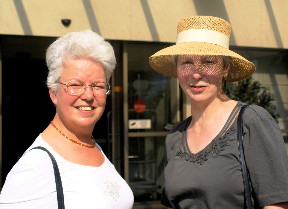
In the late 1980s I was working in the editorial office of an international geophysical journal and had joined the European Association of Science Editors (EASE). The first EASE meeting I attended was a ‘wow’ moment – gosh, there were other people struggling to make sense of scientific manuscripts written by non-native speakers! Back in the Netherlands, I started seeking out other editors. In 1989 Joy Burrough published a letter in the EASE journal about Dunglish and had contact with another editor, Victoria Thatcher. I wrote to Joy and this led to the first tea party where 10 editors met, held in Wageningen in July 1989. This was followed by a more serious meeting in Zeist in November where we decided to set up an official society. The embryonic SENSE soon expanded by word-of-mouth, and through the membership lists of EASE and WERK (Wetenschappelijk redacteurenkring, long defunct).
SENSE’s network proved its usefulness early on, as we spent hours on the phone trying to check terminology with each other (no e-mail or internet then, just paper dictionaries, a fax and a dial-up modem for transferring very small text files to translation agencies). How technology has totally changed our profession since 1990 could be the topic of a historical essay.
When I first wrote to Joy by snail mail in the spring of 1989 I had little idea of what would grow from our desire to talk to other editors and discuss the problems we were encountering. Early committees overcame limited financial resources and the problems of dealing with big egos (people who take initiative and set up a society are generally not the timid type). I’m hugely proud to see SENSE reach its 20th anniversary as an active society with 375 members covering such a wide variety of subjects and expertise. The boost from the e-mail forum has long ensured that some form of the society will continue to exist, whatever the ups and downs various committees may face.
This article was originally published in eSense 20 (September 2010, available to SENSE members only). The SENSE Historical Archives contain a newsletter published in 1995, in which fellow founding members Jackie Senior and Joy Burrough-Boenisch have compiled the timeline in more detail. The society’s ‘history’ can also be traced through the following publications:
- Burrough-Boenisch, J. 1990. ‘Back to English’. TWIOSCOOP (Tijdschrift voor Technische en Wetenschappelijke Informatie-overdracht), jaargang 8, nummer 2.
- Burrough-Boenisch, J. 1990. ‘The Society of English-Native-Speaking Editors’. TWIOSCOOP, jaargang 8, nummer 4.
- McNab, S. 1990. ‘Editing of science papers written in English by Dutch graduate students’. NRC Handelsblad, 16 January. (Based on Sheila’s article in European Science Editing no. 315, September 1988.) [Editor's note: Though this did not mention SENSE, the ensuing correspondence published in the NRC Handelsblad on 13 February 1990 included a letter reporting the setting up of SENSE.]
- Senior, J. 1990. ‘English-native-speaking editors in the Netherlands’. TWIOSCOOP, jaargang 8, nummer 2.
- European Science Editing No. 39, January 1990. [Editor's note: Report on Pangbourne workshop.]
- European Science Editing No. 42, January 1991. [Editor's note: News section report on SENSE.]
SENSE 2020 Conference goes online!
Written by Matthew Curlewis & John Linnegar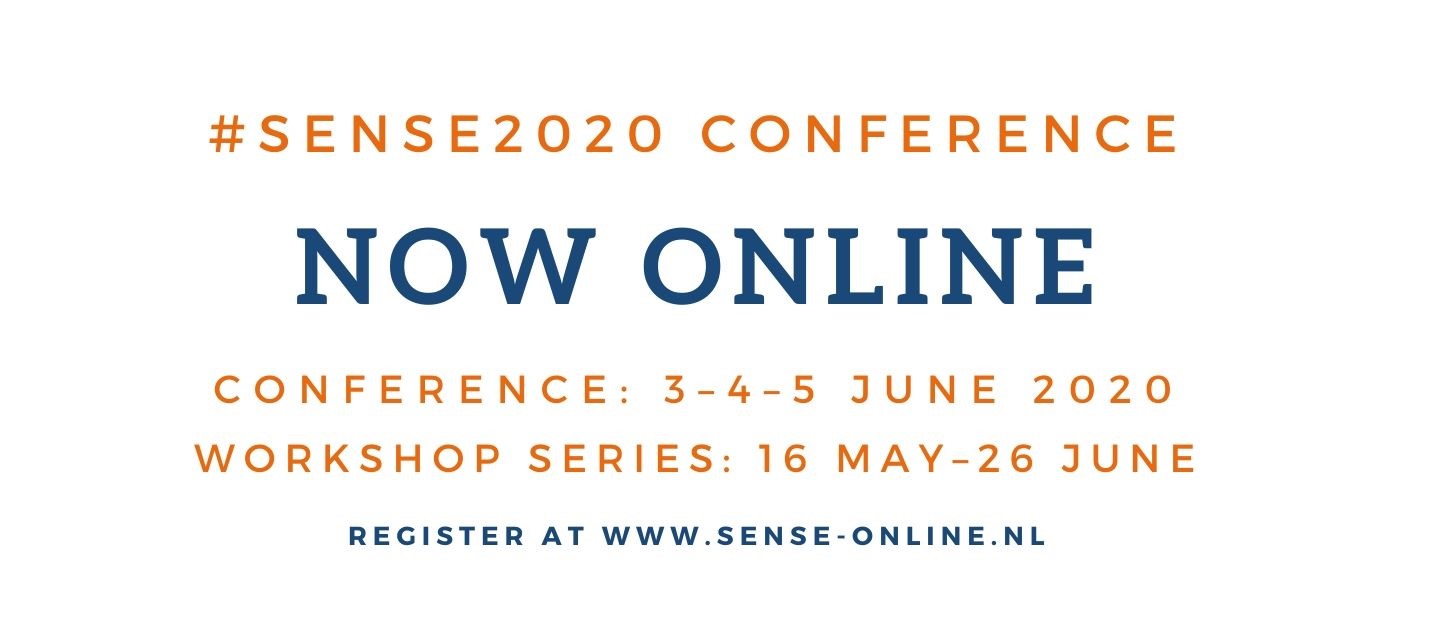
At the end of March, we had to announce the cancellation of our 2020 Jubilee Conference in Maastricht to comply with government measures on covid-19. To make something positive from all the doom and gloom, we are pleased to announce that the conference will now take place online in the afternoons of 3, 4 and 5 June 2020. For this online format, we have reduced and simplified the prices of conference and workshop tickets. How's that for good news?
The pre-conference workshops we had planned in Maastricht will now take place as a series throughout May and June, so you can attend as many as you wish. You can register for a workshop or for the conference up to 16:00 on the day before it starts. Once we have received your payment, you will be sent the access codes required to attend.
Please see the programme page for details and go to the SENSE Events calendar to register for what promises to be a unique and exciting event!
Paul Beverley workshop now incorporated into 2020 Conference programme
On 16 May, Paul Beverley will kick off the 2020 Conference workshop series with his highly anticipated workshop on macros for MS Word. If you are starting with zero knowledge of macros, the training will lead you through from square one. But for those of you who have already been using some macros, there will be plenty of scope for learning new tips and tricks. As there are well over 700 macros available (!), there is always something new to help you boost your effectiveness as a writer, an editor or a translator. So whether you are a 'macro newby' or a seasoned and serious devotee, there’s bound to be something new for you to take away from the day’s sessions
Paul Beverley has been creating macros for use by editors and proofreaders for over 13 years. The macros (over 700 of them) are freely available via his website and are used in more than 40 countries. Despite being of pensionable age, he enjoys editing far too much to stop altogether, so he occasionally edits technical books and theses. He has also produced more than 100 training videos, so that you can see the macros in action on his YouTube channel.
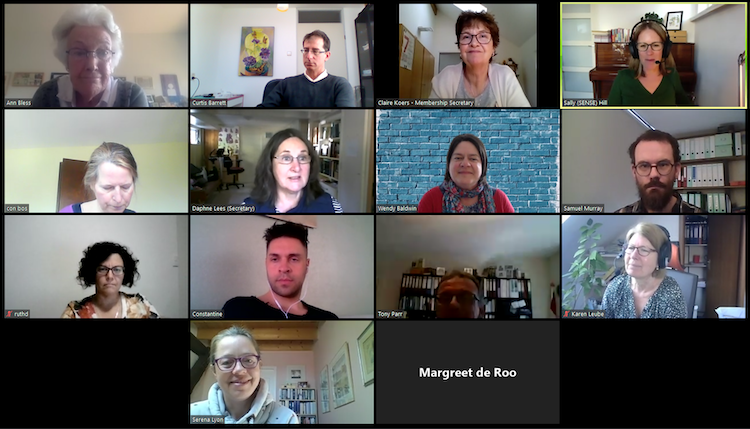
We must take our silver linings as they come. Did you think you’d get a report for an Eastern SIG editing slam from one of your Aussie members who is now back in Australia? Neither did she. But thanks to our new circumstances, about 16 of us were able to meet over Zoom on 6 April with people in the Netherlands, Australia, Switzerland, Germany and Spain.
The setup was that Sally Hill and Daphne Lees had both edited the discussion section of a journal article. Attendees had been sent the section in Word – so we could make our own edits – as well as the PDF of the full article, so we could read the discussion in context.
During the session, Sally shared her screen to show us three pieces of text: the original, her tracked edits and Daphne’s tracked edits. We then discussed how their edits differed, and what further changes we had made.
Apart from the mechanics, a key theme came out of the (very gentle) slam: for an audience of of peers, familiarity with the topic is important. With Daphne having more experience in this field than Sally, she was able to avoid some of queries because she knew a) what the author meant, and b) how to fix any errors. Sally had raised this as a point right at the start, saying that the first thing you need to ask yourself when editing in these specialist fields is ‘Do I understand enough to do this job?’
After we had been through the text, Sally showed us a summary of the types of changes. Most editors will find the mechanical ones and address them in fairly similar ways; these include corrections to prepositions, articles, modal verbs, subject-verb agreement, plurals, punctuation, tenses and style issues. However, there was more variety between Sally and Daphne – and across the bigger group – when it came to redundancy, wordiness, word choice and word order.
There were also some nuances that came from being aware of the cultural background of the author, such as knowing that patients in Chinese hospitals are often cared for by their families. This kind of knowledge can be developed through your relationship with your client. Another good tip was to begin that relationship by sending a small section of edited text, so that your client knows how you work and what kind of edits they can expect.
The session was diligently prepared and masterfully delivered, ending with a whisper about a possible rematch with another two slammers and a third moderator. When we get back to our (new) normal, your Aussie correspondent for one will be hoping for continued international interaction of this quality.
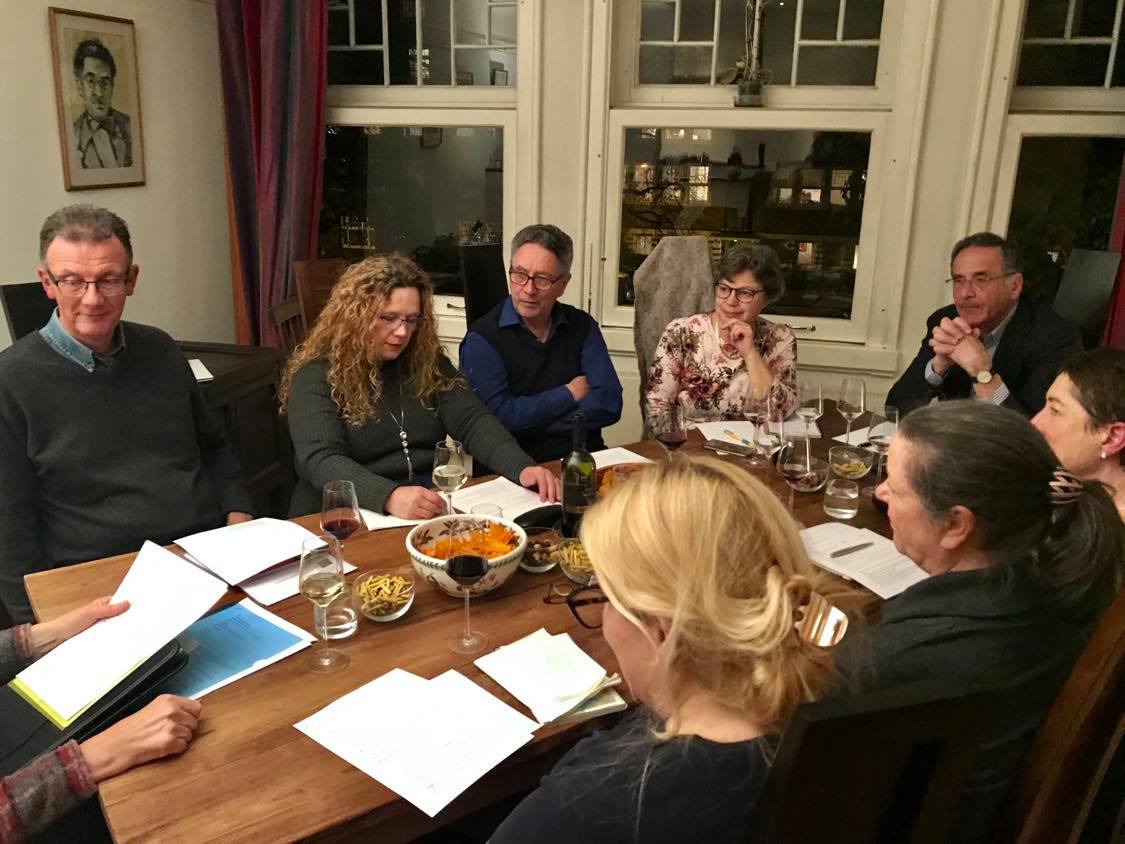
In this new blog series, we will highlight the different Special Interest Groups (SIGs) SENSE has to offer. SIG meetings are open to all members, and guests are welcome to attend one or two meetings before deciding whether they would like to join SENSE. For upcoming SIG meetings, check the SENSE Events calendar. Contact the SIG convener for more information or to suggest a meeting topic. If you would like to start a new SIG, contact our SIG and Social Events Coordinator. In this edition, we talk to FINLEGSIG co-conveners John Alexander and John Hynd.
Can you tell me a little about yourselves?
JH: I’ll start. Imagine you’re Heather’s mother. You’ve just flown over from Durham because Heather is in trouble. In the clink actually. She went over for a hen party that got out of hand. The police say that she mistook a police officer for a male stripper and tried to shove a five pound note down his trousers. Heather’s mother (and Heather too) badly need a good translator to help straighten things out. What could be more reassuring for them to know that one of my topics in theology in Rome was the relationship between Augustine’s abandonment of his mother to take ship to Italy and the Church’s subsequent treatment of Mariology?
JA: Actually, yes, that is reassuring. The law regulates all human conduct – well, except for religion and philosophy, but that’s not conduct. Which means the ability to translate (yes, translate!) universal, abstract rules to rules that apply to policemen, male strippers and drinking too much. So an abstract education – mine starts with a History degree – helps. And that applies to finance as well: mezzanine financing, Double Dutch sandwich, all examples of abstract ideas applied to real-life situations.
What is FINLEGSIG and who is it for?
JH: Editors and translators working on financial and legal texts. So go the topics.
How did FINLEGSIG get started?
JA: About ten years ago, Stephen Machon decided it was time for a grouping like that. It was very popular and we’d meet in the splendid offices of a leading law firm on Amsterdam’s Zuidas.
How often does FINLEGSIG meet up?
JH: Three times a year or so.
How many people generally attend FINLEGSIG meetings?
JA: We meet in my place which is easy to get to, so there’s a limit on the numbers: 12, including the speaker. We did, however, increase the numbers to 18 for our latest meeting when Tony Parr was using slides. But then you don’t sit around a table, which is more gezellig. And we’ve found that nibbles and a glass of wine do a lot to make a success of the meeting.
When and where will the next FINLEGSIG meeting be?
JH: We’d normally be planning to meet again in June, but depending on how the social distancing rules evolve, that’s looking very ambitious. Early autumn, maybe. At the usual address on Minervalaan. We don’t like the idea of a video meeting.
Interested in joining the next FINLEGSIG meeting? Keep an eye on the SENSE Events page!
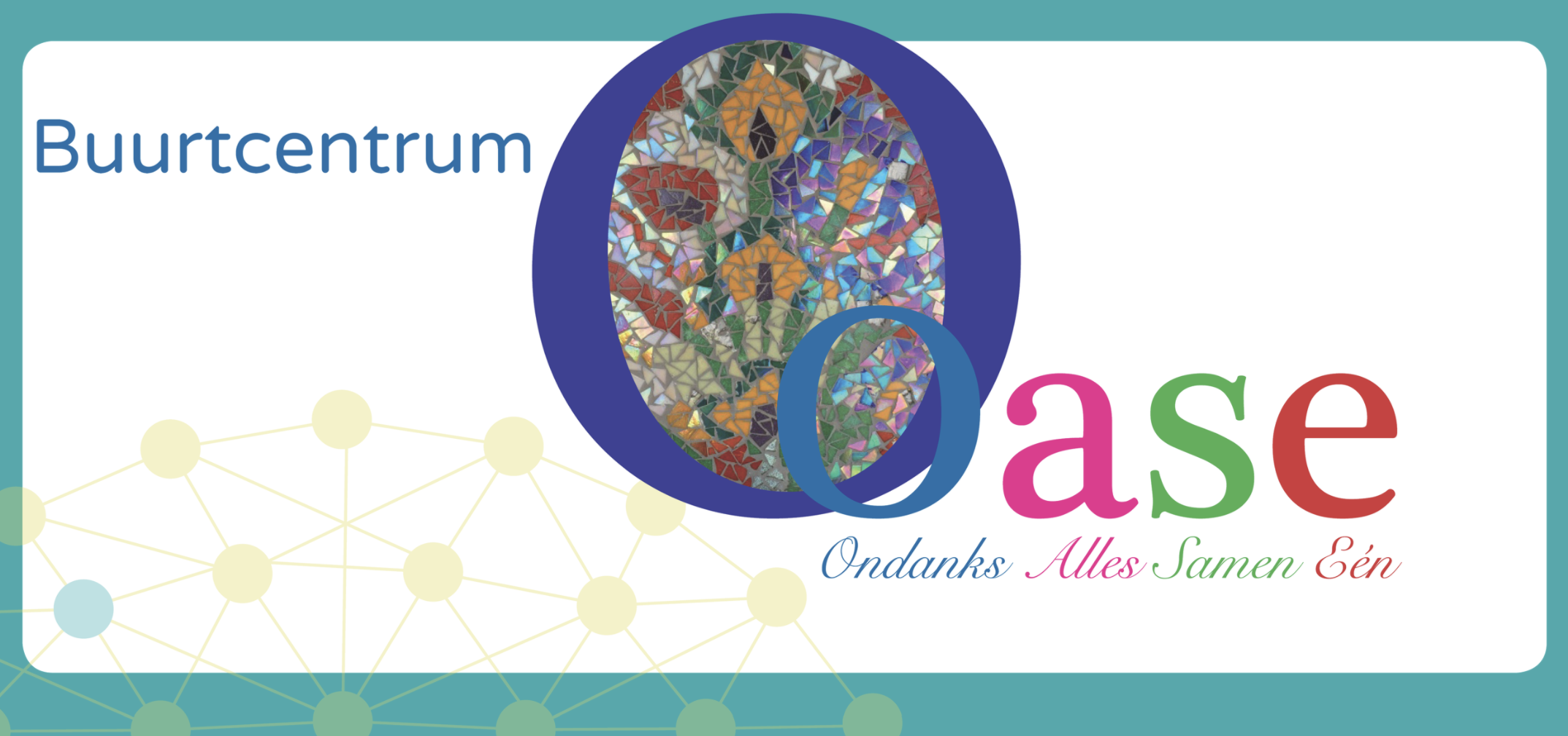
The Utrecht SIG met on the evening of Wednesday 11 March, in a new location. If you have been following this you will know that the Park Plaza has turned out to be unsuitable, and other central spots are too expensive for meetings that are free to members. Convener Maartje Gorte had found a surprisingly accessible if not central spot, buurtcentrum Oase, right across from Utrecht Zuilen station. Four of us joined Maartje in a clean and quiet meeting room (only now and then, when a door was opened, did we hear the distant strains of Bollywood karaoke from the main hall downstairs). Since there was no text to work on this time, we were free to discuss whatever was on our minds.
Inevitably this included coronavirus, but also a few things like the new mandatory disability insurance for ZZP’ers. Opinions differed on this one; some of us resented it, some of us welcomed it. A couple had looked into insurance before and found it simply too expensive, especially given it usually does not pay out for a year or longer after you have to stop working. One member had applied for it some time ago, but their application was rejected for reasons that made absolutely no sense. The rates under the mandatory system are more reasonable than before. In any case, it is not expected to take effect until 2024.
We also discussed the overuse and near-meaninglessness of the word duurzaam (‘sustainable’ but these days it’s used to mean the same thing as ‘environmentally friendly’). Other subjects included resources for sustainability, a new member’s activity leading night-time city walks in that very area, and John Linnegar’s grammar workshop the weekend before. Finally, we packed up the snacks we had brought to share, and walked the 80 metres or so to catch our trains at Zuilen.
The next meeting, provisionally scheduled for 13 May, will be live online. Check the Events page for details.
In this new blog series, we will highlight the different Special Interest Groups (SIGs) SENSE has to offer. SIG meetings are open to all members, and guests are welcome to attend one or two meetings before deciding whether they would like to join SENSE. For upcoming SIG meetings, check the SENSE Events calendar. Contact the SIG convener for more information or to suggest a meeting topic. If you would like to start a new SIG, contact our SIG and Social Events Coordinator. In this edition, we talk to SENSE Ed convener David Barick.
Can you tell me a little about yourself?
I’ve been a member of SENSE since 2012, which was when I set up my language business. Although I also work as a translator, most of my time is devoted to English teaching. I specialize in academic English, although I’ve taught conversational and business English as well.
What is SENSE Ed and who is it for?
SENSE Ed is a sounding board and information source for people with any sort of involvement in English-language education. As I mentioned above, I’m active in several different areas of education. Some people who attend our meetings have a similar activity pattern, while others devote themselves to only one of those areas. It doesn’t matter as there’s room enough for everybody, and I try to alternate the themes of our meetings so that each field gets attention in turn.
How did SENSE Ed get started?
I don’t know the exact year, but it was shortly after I joined SENSE that Iris Maher took the initiative to set up this group. I had already had some mentoring talks with her, so when she told me about her intention of starting this group and invited me to come and give it a try, I was happy to join. After a few years, Iris asked me to replace her as convener.
How often does SENSE Ed meet up?
We meet twice a year, on Saturday afternoons.
How many people generally attend SENSE Ed meetings?
Anywhere from seven to ten.
When and where will the next SENSE Ed meeting be?
We meet in Utrecht – as you know, exact venues are in a bit of doubt at the moment there. I expect the next meeting will be held in late May or early June barring unforeseen circumstances, if you know what I mean.
Interested in joining the next SENSE Ed meeting? Keep an eye on the Events page!
